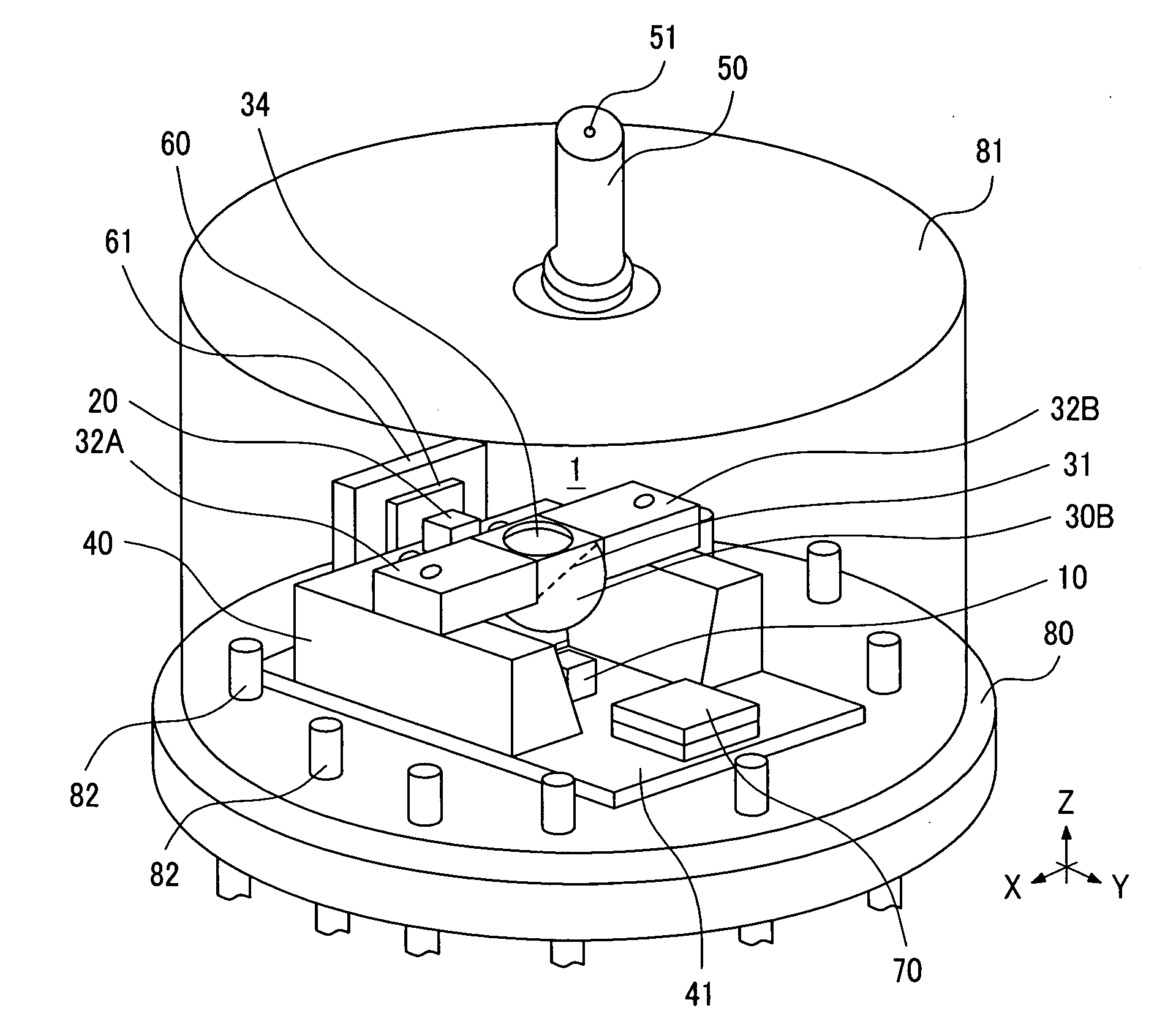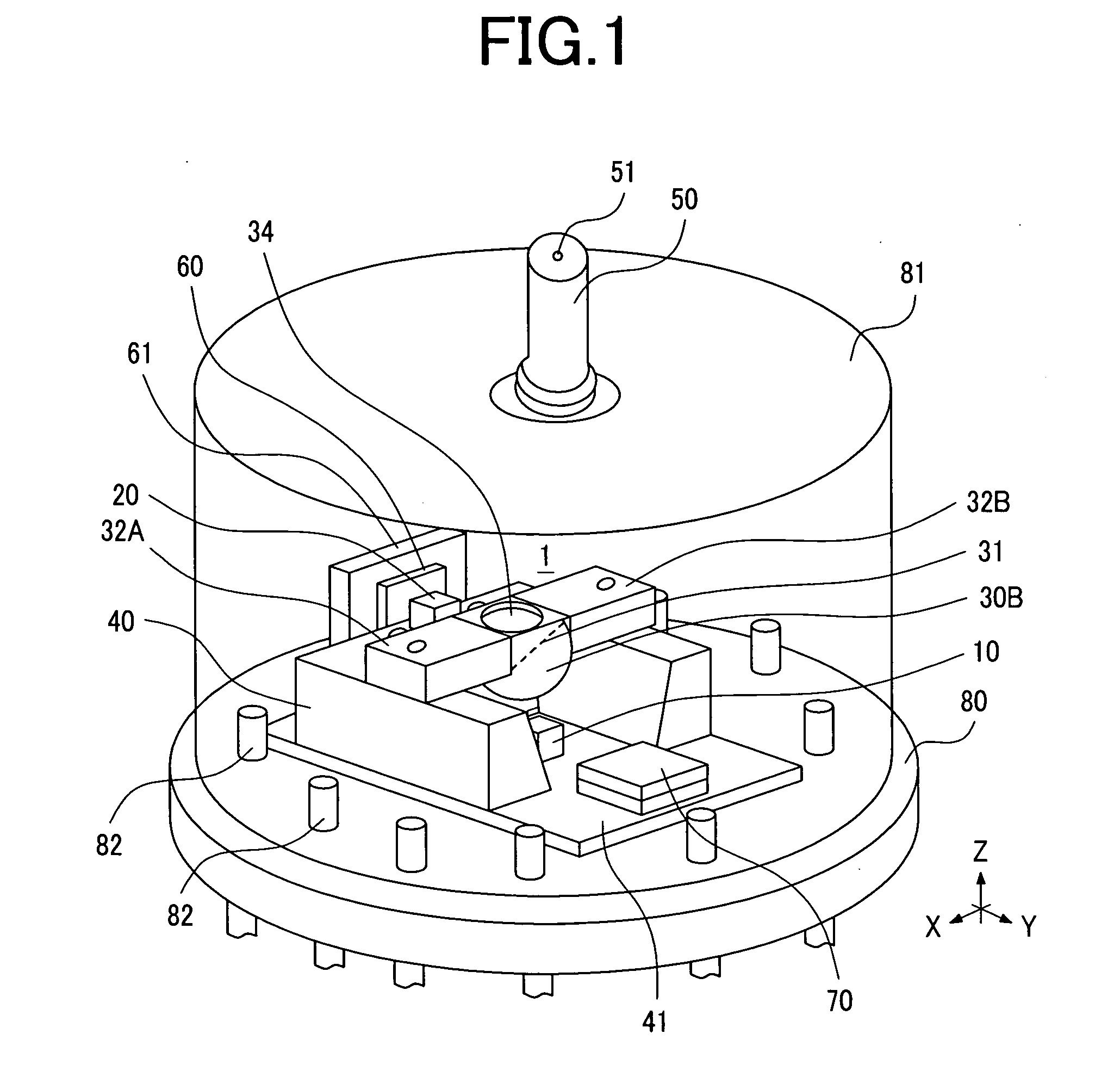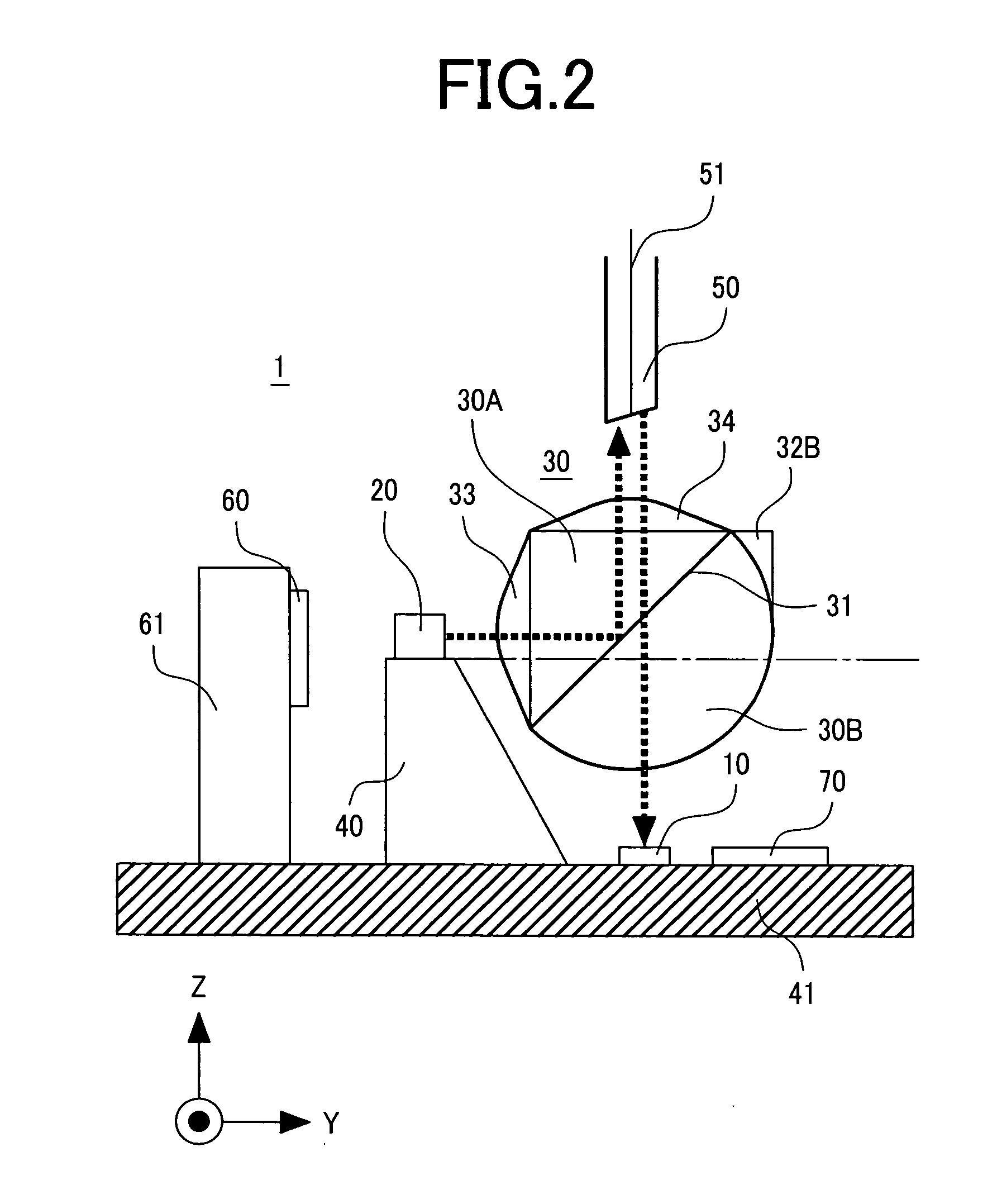Optical prism and optical transceiver module for optical communications
- Summary
- Abstract
- Description
- Claims
- Application Information
AI Technical Summary
Benefits of technology
Problems solved by technology
Method used
Image
Examples
embodiment 1
[0022]With reference to FIGS. 1 and 2, the following describes the configuration of an optical transceiver module having an optical prism for optical communications according to a first embodiment of the present invention. FIG. 1 schematically illustrates the configuration of the optical transceiver module according to the first embodiment of the present invention. FIG. 2 is an enlarged cross section view of the optical transceiver module shown in FIG. 1. FIG. 2 shows the individual configurations and mutual relationships of a substrate, a sub-mount structure, and main components (laser diode, photo diode and optical fiber) of the optical transceiver module.
[0023]The optical transceiver module (hereinafter referred to as an “optical module”) 1 shown in FIG. 1 may be provided as part of an optical network unit (ONU) to perform bidirectional communications using wavelength division multiplexing (WDM) transmission. The optical module 1 is mounted on a can package base 80 and protected ...
embodiment 2
[0040]In the optical prism 30 of the first embodiment mentioned above, the wavelength division multiplexing filter 31 is directly stuck to the slant surface (joint surface) of the right-angled prism 30A and that of the hemisphere lens 30B. Therefore, these joint surfaces are coated with an adhesive such as a ultra-violet cured resin. In a second embodiment, a concave portion, thicker than the wavelength division multiplexing filter 31, is formed in the slant surface of the hemisphere lens 30B. The wavelength division multiplexing filter 31 is set in this convex portion.
[0041]FIG. 5(A) shows a cross section of the components constituting the optical prism 30 of the second embodiment. Concaves 35 are formed at both ends of the slant surface 30C of the right-angled prism 30A. As mentioned above in the description of the first embodiment, the slant surface 30D (indicated by a broken line) of the hemisphere lens 30B has convexes 39 formed at both ends for engagement with the concaves 35 ...
embodiment 3
[0046]In each of the first and second embodiments mentioned above, the optical module 1 is configured so that the light signal L2 from the light emitting portion 20 is focused by the convex lens 33 and reflected by the slant surface of the right-angled prism 30A′ (or the surface joined with the hemisphere lens 30B) onto the optical fiber 51 while the light signal L1 emitted from the optical fiber 51 transmits through the slant surface of the right-angled prism 30A (or the surface joined with the hemisphere lens 30B) and the wavelength division multiplexing filter 31 and is focused by the hemisphere lens 30B onto the light receiving portion 10. In the case of a third embodiment, the optical module 1 is configured so as to allow surface mounting.
[0047]FIG. 6 shows a cross section of the configuration according to the third embodiment, and the cross section corresponds to that shown in FIG. 2 in the first embodiment. As indicated by a thick dotted line, the light signal L2 from the lig...
PUM
 Login to View More
Login to View More Abstract
Description
Claims
Application Information
 Login to View More
Login to View More - R&D
- Intellectual Property
- Life Sciences
- Materials
- Tech Scout
- Unparalleled Data Quality
- Higher Quality Content
- 60% Fewer Hallucinations
Browse by: Latest US Patents, China's latest patents, Technical Efficacy Thesaurus, Application Domain, Technology Topic, Popular Technical Reports.
© 2025 PatSnap. All rights reserved.Legal|Privacy policy|Modern Slavery Act Transparency Statement|Sitemap|About US| Contact US: help@patsnap.com



